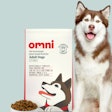“When life gives you lemons, make lemonade.” At the heart of that tried and true saying is the philosophy that nearly every problem can become an opportunity—a concept that businesspeople, including those in our industry, know well.
So, when we asked petfood experts for their thoughts on the industry’s top opportunities and challenges (p. XX), some issues were identified as both. For example, the continued development of natural, premium, functional and wellness products was considered by far the best opportunity for the industry, but some experts saw a downside, too, especially for consumers. Mark Liberman, VP of sales for Peel Plastics Products, said helping them understand how to choose the right diets for their pets is a challenge. “There are numerous categories (science-based diets, holistic, organic…) and unless consumers are well informed, they can be faced with a tough decision.”
Greg Aldrich, PhD, president of Pet Food Ingredients & Technology, cited consumer perceptions vs. the reality of what goes into petfoods. “Not to bash any of the components. The industry has done an exceptional job of dressing up and adding value to materials used in petfoods by portraying lovely pictures of succulent (human) foods. When the consumer finally cracks the code for what is actually used, there could be a revolt,” he said. “Not so much in public outcry but in lawsuits and pressure on lawmakers for tighter labeling names and claims for petfoods.
“The industry needs a ‘come clean’ campaign to address the liberties that have been taken with product portrayals that are inaccurate (or egregious fiction),” Aldrich continued. “Some might think this hyperbole; but, it is a significant liability to the credibility of our industry."
For David Dzanis, DVM, PhD, DACVN, CEO of Regulatory Discretion, the concern lies in the difficulty in meeting the varying labeling requirements of different countries. “In my experience, it is often onerous to design a label that will satisfy all 50 state feed control officials within the USA, never mind meeting the needs of authorities in different parts of the world.”
As a result, labels for petfoods sold in different regions and countries bear separate declarations to satisfy the needs of each authority—and often multiple languages, too. “The label can get very, very crowded. This may serve to overwhelm if not confuse the purchaser rather than provide helpful label information,” Dzanis said. “A cooperative effort between the various industry organizations to develop guidance for multi-country/multi-region labeling would be very helpful in facilitating global trade.”
Retail channels and pricing present another set of challenges, especially in relation to premiumization, said David Lummis, senior pet market analyst for Packaged Facts. “Handling the conflicting needs of competitive pricing and ongoing conversion of pet owners to higher priced fare is a tricky business and I think in most cases a tough call for marketers since big box retailers are so heavy into affinity branding programs and aggressive price promotions. Marketers who want to preserve their premium, and especially superpremium, cachet may need to (continue to) bite the bullet as the economy slowly strengthens and pet owners open back up to heavy spending on the premium side.”
For Roman Versch, president of Labrador Franchises/Pet Depot, distributor and retailer support of brands in the US is a challenge. “Our experience indicates distributor sales rep and retail staff counts have been affected by increasing employee costs and travel/delivery expenses, so fewer reps are seeing more accounts, and less time on brand education is being spent. Also, with smaller retail staffs, recommending foods is more difficult. Manufacturers need to consider marketing over retailers to consumers to get customers into their distribution channels.”



















